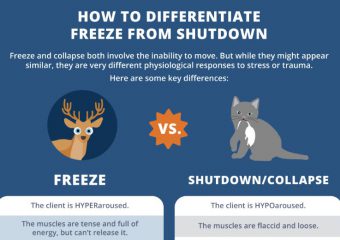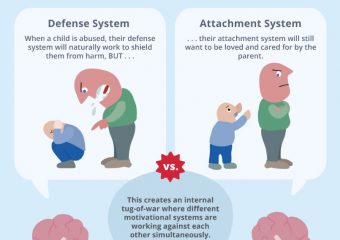The freeze and shutdown responses to trauma can resemble each other . . . . . . but they are very different in terms of what’s happening in your client’s brain, body, and nervous system. And that means they require different grounding strategies as well. In this infographic, we lay out some key cues to […]
Archives for October 2020
A Mistake Practitioners Might Make When Their Patient Is Stuck in the “Attach/Cry-for-Help” Response
We know fight, flight, and freeze . . . . . . but recently the experts have identified several more defense responses to trauma, including “attach/cry-for-help.” This response is potentially the least understood, and it can be challenging to work with. And according to Kathy Steele, MN, CS, there’s a common mistake that practitioners make […]
A Simple Strategy for Dissociative Clients Who Lose Time
When a client dissociates in session, there are many grounding techniques we can use to bring them back to the present. But what can help clients when they dissociate outside of your office – particularly when they report losing chunks of time? Below, Ruth Lanius, MD, PhD shares a simple yet effective strategy that helps […]
[Infographic] Working with Structural Dissociation
One challenge of working with trauma is when a patient’s dissociated “parts” are operating independently . . . . . . or worse, they’re at odds with each other. This can be very distressing for the patient (and lead to a dysregulated nervous system). But the Structural Dissociation Model developed by Kathy Steele, MN, CS, […]
The Differences in Dissociation Triggered by Shame and Terror – and How to Work with Each
Some of our most challenging work is with clients who have suffered from trauma – and when a client dissociates, that work can become even more complex. The way we approach a client’s dissociation may vary based on what triggered it. In the video below, Bethany Brand, PhD, will share the clues she looks for […]




